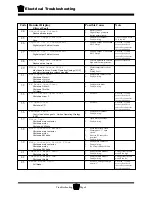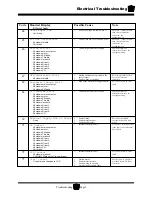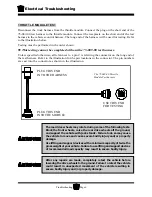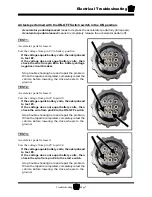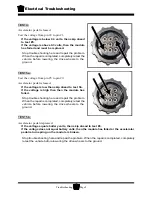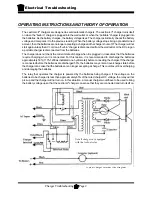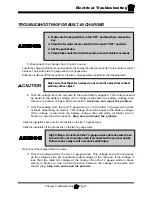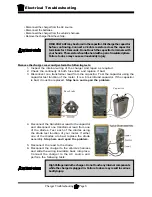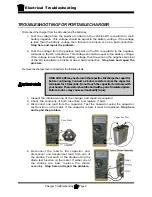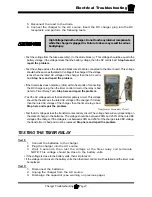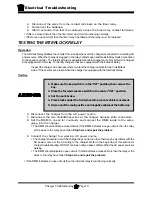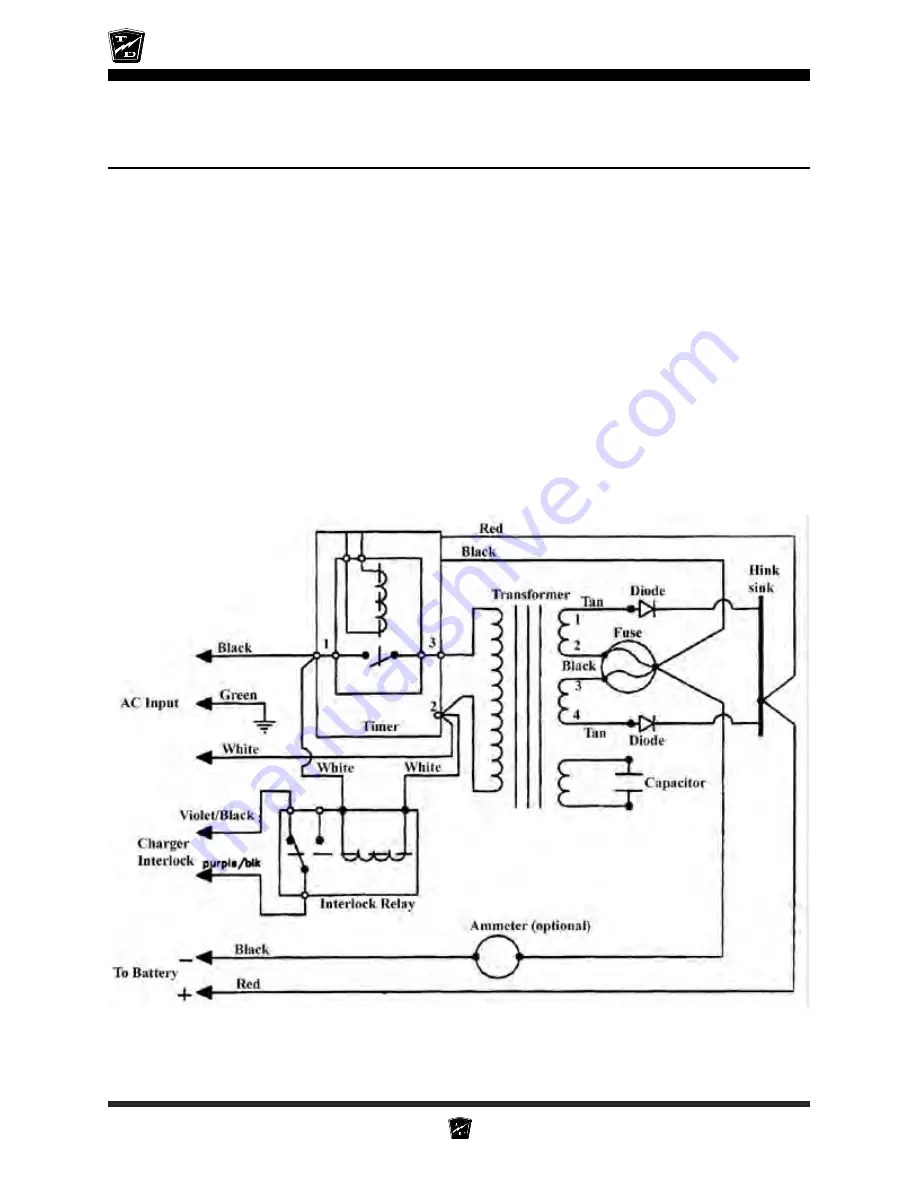
Electrical Troubleshooting
Charger Troubleshooting
Page 2
OPERATING INSTRUCTIONS AND THEORY OF OPERATION
The Lestronic II
®
chargers are designed as semiautomatic chargers. The Lestronic II
®
charger turns itself
on when the “built- in” charger is plugged into the wall outlet, or when the “portable” charger is plugged into
the batteries. As the battery charges, the battery voltage rises. The charger periodically checks the battery
voltage and compares it to the previous reading. When the battery voltage stops rising a predetermined
amount, then the batteries are no longer accepting a charge and the charger shuts off. The charger will not
start again unless the AC cord on a “built-in” charger is disconnected from the wall outlet, or the DC plug on
a portable charger is disconnected from the batteries.
The charger does not check the current state of charge when it is plugged in, it assumes that the batteries
require charging when it is connected. For this reason, it is recommended to discharge the batteries
approximately 50% (1175-1200 as indicated on a hydrometer) before connecting the charger. If the charger
is connected before the batteries are discharged 50%, the batteries may enter an overcharge state before
the charger can sense that the batteries are no longer accepting a charge. This could result in overcharging
and damaging the batteries.
The relay that operates the charger is powered by the batteries being charged. If the voltage on the
batteries to be charged is less than approximately 65% of the rated charger DC voltage, the relay will not
pick up and the charger will not turn on. In this situation, a manual charger would have to be used to bring
the battery voltage up so that the Lestronic
®
charger can sense that they are connected and turn itself on.
Typical Charger Internal Wire Diagram
Not all chargers are equipped
with the lockout relay
Summary of Contents for B0-T48-48 Taylor Truck T48
Page 2: ......
Page 14: ...TAYLOR DUNN...
Page 30: ...TAYLOR DUNN...
Page 68: ...Maintenance Service and Repair Steering Page 22 Exploded View of Steering Gear...
Page 86: ...TAYLOR DUNN...
Page 112: ...TAYLOR DUNN...
Page 118: ...TAYLOR DUNN...
Page 130: ...TAYLOR DUNN...
Page 140: ...TAYLOR DUNN...
Page 152: ...Illustrated Parts Parts Page 2 Front Axle...
Page 154: ...Illustrated Parts Parts Page 4 Steering Knuckle...
Page 156: ...Illustrated Parts Parts Page 6 Steering Linkage...
Page 162: ...Illustrated Parts Parts Page 12 Rear Suspension View from rear...
Page 164: ...Illustrated Parts Parts Page 14 Transmission Gear Case...
Page 168: ...Illustrated Parts Parts Page 18 Rear Brakes Front Brakes...
Page 170: ...Illustrated Parts Parts Page 20 Brake Lines and Master Cylinder...
Page 172: ...Illustrated Parts Parts Page 22 Motor...
Page 174: ...Illustrated Parts Parts Page 24 Motor Mount Apply 94 421 34 grease to inside of motor coupler...
Page 186: ...Illustrated Parts Parts Page 36 Batteries FRONT OF VEHICLE...
Page 188: ...TAYLOR DUNN...







